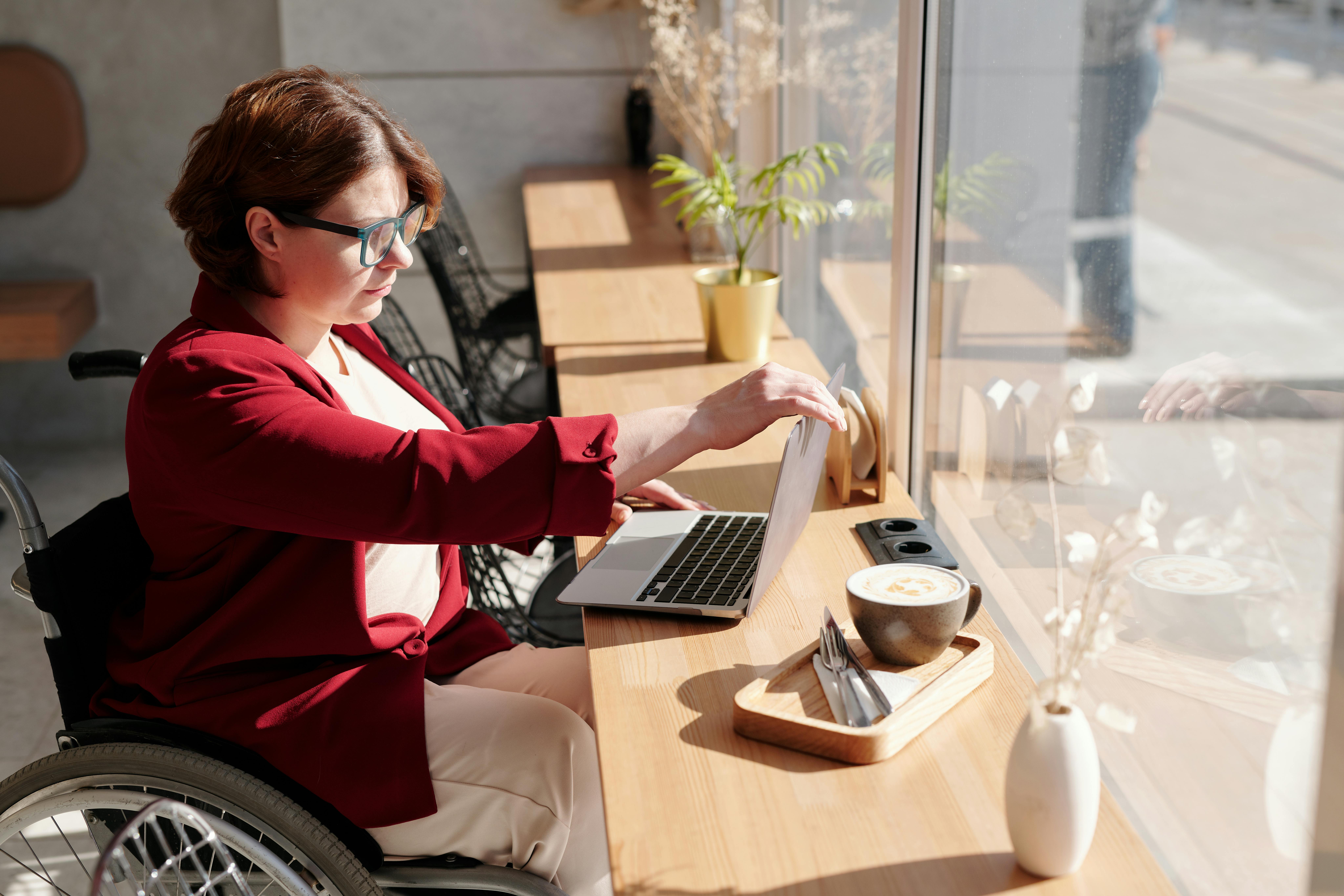Why mobility impairment and musculoskeletal pain often go hand in hand
If you experience mobility impairment, whether due to an injury, a neurological condition, ageing or another health issue, you might also deal with chronic musculoskeletal pain. The two are closely connected. When movement is limited, certain muscles, joints and connective tissues work harder, leading to discomfort, stiffness and even long-term pain.
The good news is that whether you use a walking aid or not, there are ways to manage pain, support your body and improve comfort. Let’s explore how mobility limitations contribute to musculoskeletal pain and how to find relief.
How mobility impairment contributes to musculoskeletal pain
Mobility challenges change how you move, sit, stand and bear weight. This often leads to uneven pressure on the body, muscle imbalances and joint stress.
1. Overuse of certain muscles and joints
- Compensatory movements. If one part of your body is not moving well, another part may compensate. For example, if one leg is weaker, the other leg, hips or back may take on extra stress.
- Joint strain. When muscles do not support joints properly, excess force can cause joint pain, stiffness and inflammation.
- Neck and shoulder tension. If using a mobility aid like a cane or walker, upper body muscles may overwork, leading to discomfort.
2. Muscle weakness and stiffness
- Reduced movement. Limited mobility often means less physical activity, which can cause muscle weakness and stiffness.
- Tight hip flexors and lower back pain. Sitting for long periods shortens muscles in the hips and back, leading to discomfort.
- Decreased blood flow. Less movement means less circulation, which can contribute to muscle tightness and delayed recovery from pain.
3. Poor posture and spinal alignment issues
- Sitting or standing imbalances. If you rely on one side of your body more than the other, it can lead to uneven pressure on the spine and joints.
- Forward-leaning posture. Using a mobility aid incorrectly or having poor posture while sitting can strain the neck, shoulders and lower back.
Managing musculoskeletal pain with and without walking aids
Whether you use a cane, walker, wheelchair or do not use mobility aids, there are ways to support your body, reduce pain and improve movement.
If you do not use a walking aid
- Focus on joint-friendly movement. Low-impact exercises like seated stretches, water therapy and resistance band exercises can maintain strength and flexibility.
- Engage core muscles. A strong core supports balance and reduces strain on the lower back. Try gentle core exercises like seated marches or abdominal bracing.
- Avoid prolonged sitting or standing. Shift positions frequently, use cushions for support and take micro-breaks to prevent stiffness.
- Stretch daily. Gentle stretching of the hips, back and legs can ease tightness and improve circulation.
If you use a walking aid (cane, walker, crutches or wheelchair)
- Ensure proper fit. A poorly adjusted cane or walker can lead to wrist, shoulder and back strain. Work with a physical therapist to find the right height and grip.
- Engage in upper body strengthening. Strengthening the arms and shoulders can help prevent overuse injuries when using mobility aids. Resistance band exercises and seated arm movements can be helpful.
- Use supportive seating. If in a wheelchair, consider an ergonomic cushion or lumbar support to maintain spinal alignment and reduce pressure points.
- Alternate hand use. If using a cane, try switching hands occasionally to avoid overuse on one side of the body.
Practical strategies for reducing pain and improving mobility
Regardless of whether you use a mobility aid, these strategies can help relieve musculoskeletal pain and improve function.
1. Gentle movement and exercise
- Seated or supine exercises. If standing is difficult, try exercises while sitting or lying down. Chair yoga, resistance bands or bed-based stretching can help.
- Aquatic therapy. Water exercise reduces joint stress and allows for easier movement.
- Isometric strengthening. Contracting muscles without moving (like pressing your palms together) can help maintain strength without excessive strain.
2. Pain relief techniques
- Heat therapy. Heating pads, warm baths or heated wraps can help relax muscles.
- Massage or foam rolling. Gentle massage or a foam roller can relieve muscle tightness (if tolerated).
3. Proper positioning and posture
- Cushions and supports. Use seat cushions, lumbar pillows or footrests to maintain a healthy posture.
- Align your body. When sitting or standing, ensure your head, shoulders and hips are aligned to reduce strain.
- Take frequent breaks. Change positions often to prevent pressure buildup on muscles and joints.
4. Work with a physical therapist
- Get a mobility assessment. A therapist can evaluate your movement and recommend the best strategies for reducing pain.
- Learn adaptive techniques. If certain movements cause pain, a therapist can show you alternative ways to perform daily tasks with less strain.
- Consider assistive devices. If mobility is becoming more difficult, the right walking aid or brace can prevent further strain and injury.
Final thoughts
Mobility impairment and musculoskeletal pain often go together, but small adjustments in movement, posture and support can make a big difference. Whether you use a walking aid or not, the key is finding gentle ways to stay active, support your body and reduce strain.



